13 Stunning Places to Publish Student Art and Writing
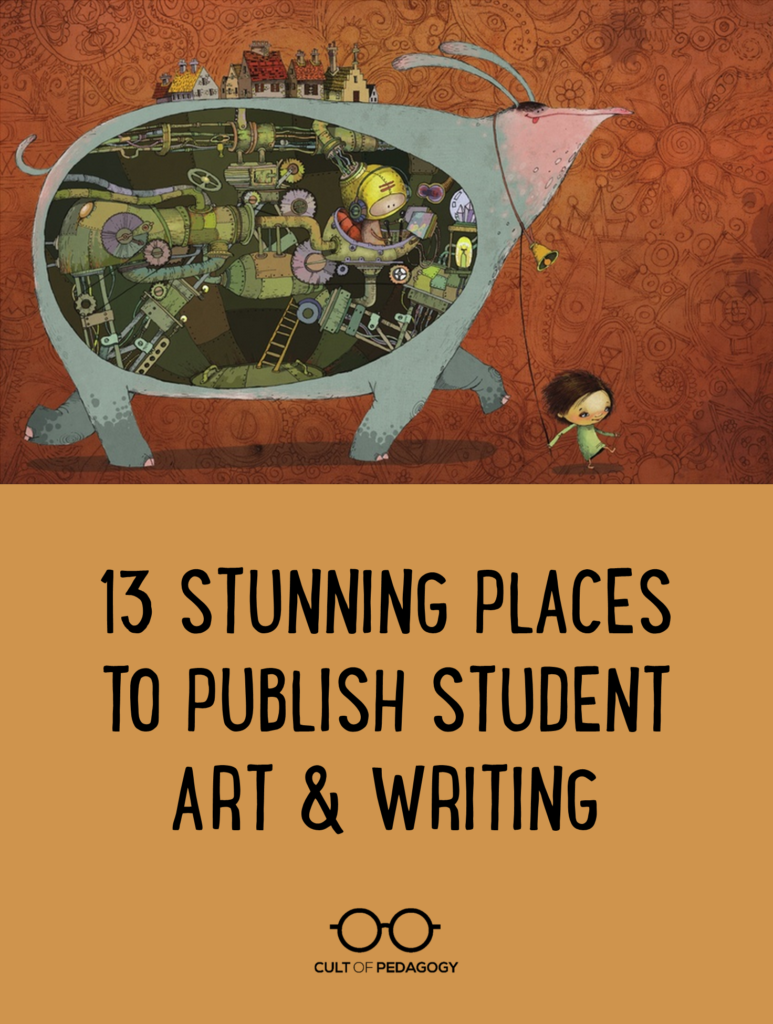
There’s something about having our work seen by strangers that makes us take it up a notch. And while displaying writing and art in the school halls or a teacher-made book can accomplish that feeling to some degree, publication in a more “official” vehicle carries more weight.
These publications are the real deal — online and print periodicals that showcase work by student artists and writers, some as young as age five. Many are run by a staff that is partly or completely made up of students. Each one is beautifully designed and features high-quality work. Some even pay. If you know a student who aspires to become a serious writer or artist, encourage them to take the next step and start working toward publication.
What Students Should Know Before Submitting
Familiarize yourself with the publication first. Although most periodicals like to publish a wide range of voices and talents, you’ll still find that each one has a “feel” to it, an overall sensibility that all of its pieces fit into. Because preparing and submitting work is time-consuming, you’ll want to give yourself the best shot at getting your work accepted by submitting things that would be a good fit.
Carefully revise your work. Most published work has been revised and polished, over and over. Use all the revision strategies your teachers have taught you. Have other, honest people look at your work and critique it. In a 2014 interview, Mike Heppner, who teaches fiction and publishing at the Walnut Hill School for the Arts, advises writers to “Take your time–it’s not a race, and it’s always best to take a piece through a couple of slow, careful drafts before showing it to editors.”
Know that lots of work gets rejected. Although some of these venues allow you to self-publish (these are labeled below), others only publish work that has been editor-selected from a pile of submissions; many who submit to those places will be rejected. This is difficult for adult writers and artists to get used to; it will likely be even harder for students. Your work is going up against the work of hundreds of other artists and writers, so expect some rejections — this is all part of the process of getting better. For those publications that offer comments on your work, take that feedback seriously. Learn from it. And keep creating.
The List
I’ve taken a good close look at all 13 of these — they are all actively publishing now, or are on brief hiatus for summer with plans to start up again in the fall. I found others that I ultimately decided to keep off the list — either because they seemed to no longer be active, because the design and user experience of their site is lacking, or because while they technically accept student work, they publish so much work by adults that the competition makes them less realistic prospects.
If you know of another publication that belongs on this list, or if you’ve had direct experience with any of these, please share what you know in the comments.
Enjoy!
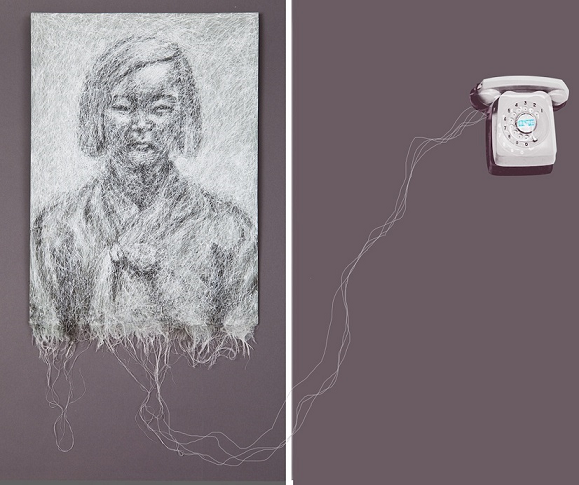
Illustration by Chungha Lim, Grade 12
The Blue Pencil
editor-selected
Age Range: 12-18
Accepts: poetry, fiction, nonfiction, plays
2017 Update: The Blue Pencil is no longer available.
As I read the Spring 2014 issue of The Blue Pencil Online, one thought occurred to me over and over: Man, this stuff is good. And dark. Edited and produced by the students at the Walnut Hill School for the Arts in Natick, Massachusetts, the online magazine is published about once a year. In addition, all submissions from students in grades 8-11 are considered for two full scholarships to Walnut Hill’s residential summer writing program.
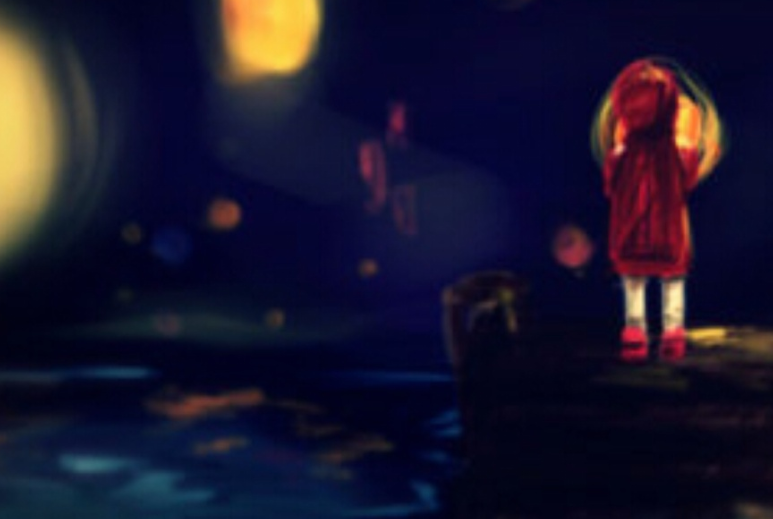
Illustration by Taylor Stevens
Canvas
editor-selected
Age Range: 13-18
Accepts: fiction, poetry, plays, creative nonfiction, new media, cross-genre, art
Website
Submission Guidelines for Writers
Submission Guidelines for Artists
Published four times a year and run by an all-student editorial board, Canvas publishes high-quality student writing and cover art in a variety of formats: online, pdf, ebooks, and print books. Something else cool: They also feature sound files of authors reading their work and some video interviews with authors. Canvas has only been around since 2013, and if what they’ve done so far is any indication of where they’re going, they will soon become a considerable force on the student literary scene.

And So the City Awakes by Allison Chin, Grade 11
Celebrating Art
editor-selected
Age Range: Grades K-12
Accepts: any art that can be captured in a still digital image
Website
Blog
Contest Rules
“Devoted to the promotion of the arts, art appreciation and teaching,” Celebrating Art holds three contests per year, in April, August, and December — and publishes the winning pieces in a hardcover book. On their blog, selected winners get their own features. Students who make the top ten in their age category win $25 and a free copy of the book, which normally costs $29.95. And there’s an incentive for educators, too: Teachers who have five or more students whose work is published win a free copy of the book.
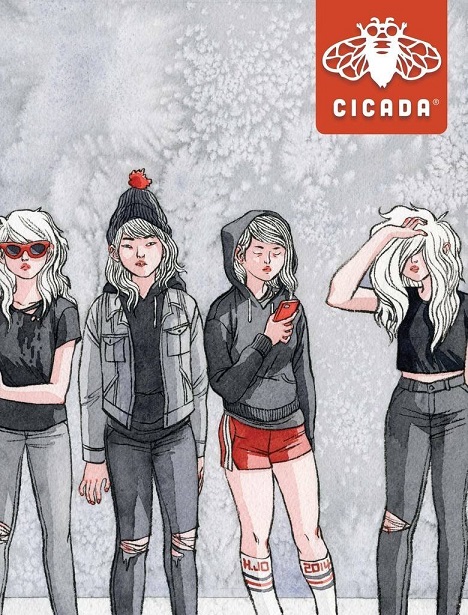
Illustration by Hellen Jo
Cicada
editor-selected
Age Range: All ages, including adult writers. (readers are 14+)
Accepts: fiction, nonfiction, poetry, alternative comics, illustrations by assignment
Update: Cicada is no longer publishing, and their website is gone. We will look for other publications to update this post in the future.
Part of the Cricket family of magazines (including Cricket, Ladybug, and Muse, among others), Cicada publishes writing for an audience of readers ages 14 and up. Artists are published by assignment only; to be considered, you first submit samples of your work. Because student work is competing with the work of adult writers and artists, competition is stiff. One more thing: This is a publication that pays for its talent. Fiction and nonfiction writers receive up to 25 cents per word, poets up to $3.00 per line.

Blasé by Nasrin Lin
The Claremont Review
editor-selected
Age Range: 13-19
Accepts: fiction,poetry, plays, interviews, art that can be presented in still digital image
Update: The Claremont Review is no longer publishing, and their website is gone. We will look for other publications to update this post in the future.
Named the 1999 “Literary Magazine of the Year” by Write magazine, the Canadian-published Claremont Review has the look and feel of a legitimate, traditional literary magazine. Since it is currently available only in print, I ordered myself a hard copy. It’s a solid publication with a clean design, with a nice mix of prose, poetry, and artwork, along with a section of contributors’ notes at the end. Claremont takes the growth of its writers seriously, even those they do not publish: All submissions that are accompanied by a self-addressed stamped envelope will receive written commentary on their work.
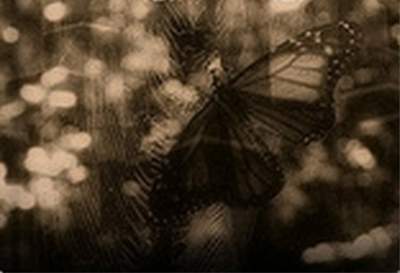
Illustration for “The Springtime Sacrifice” by Patty Pimperstin
Figment
self-publishing
Age Range: 13 and up
Accepts: poetry, fiction, plays, non-fiction
Website
Guidelines for Posting
Update: Figment was bought out by Random House. Links redirect to Underlined. Just be aware that some content may not be school appropriate.
Named one of the 25 Best Websites for Teachers by Scholastic, Figment is an online community where students self-publish their writing. Contributors — or “Figs,” as they are nicknamed on the site — earn badges by reading and reviewing other Figs’ work and submitting their own. The site regularly runs contests, polls and quizzes, and provides space for public and private groups — even teachers can create class groups for sharing and discussing work.
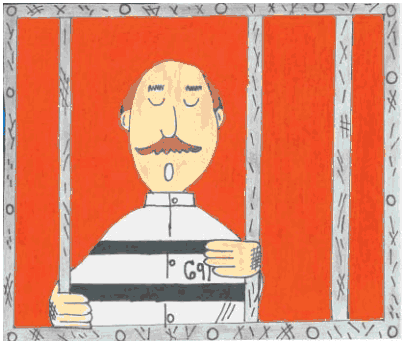
Illustration for “The Case of the Stolen Computers” by Gracie, age 14
Launch Pad
editor-selected
Age Range: 6 to 14
Accepts: fiction, nonfiction, and poetry, and illustrations by assignment
Website
Submission Guidelines for Writers
Submission Guidelines for Artists
Read a Sample Piece
Since 2007, Launch Pad has been publishing original writing and art by children. A look at the site suggests that a new piece is published once a month on average, which is not very frequent. Still, it’s got one of the lowest age limits for writing, so aspiring elementary-age writers should give this one a look.

Fishing with a Splash by Catherine, age 10
New Moon Girls
editor-selected and self-publishing
Age Range: 8 & up, girls only
Accepts: fiction, poetry, personal essays, how-to articles, art, comics, photography
Website
Submission Guidelines
View a Sample Issue
This is a fantastic site. New Moon Girls has two components: The first is a safe, supervised, ad-free online community for writers and artists to meet and talk with other girls and publish their own stuff (membership is $25.95 per year). The second is a print magazine, published six times a year, each one built around a pre-determined theme and put together by an editorial board of girls between the ages of 8 and 14. From their website: “We go beyond other websites — ones that give lip service to telling girls they can be more, while selling them superficial products that stereotype and diminish girls. New Moon Girls provides tools and spaces where girls can actually be more right now in their daily lives.”

Cover Art by Tony Fitzpatrick
Polyphony Lit
editor-selected
Age Range: High School (grades 9-12)
Accepts: fiction, poetry, creative non-fiction
Website
Submission Guidelines
Because no online samples of Polyphony Lit are available, I went ahead and bought a copy for my Kindle, and I’m so glad I did, because Polyphony Lit is kind of incredible. Not only is the work really, really good, but each piece is followed up by a comment by one of the editors who chose it for publication. This adds a personal touch, demystifying and humanizing the editorial process. Even thought the magazine has an impressive advisory board (including authors like Stuart Dybek, Chang-rae Lee and Gary Shteyngart), they still invite students to join their editorial staff. And they give feedback to every author who submits a manuscript. Managing editor Billy Lombardo explains their commitment to all writers: “Each of the 1,076 submissions we received this year represents an attempt of a teenager to make art of life, to put words — precise and beautiful — to the thing urging for release within. And in that way every submission we receive is something to be celebrated, something to be recognized, is some kind of triumph.”
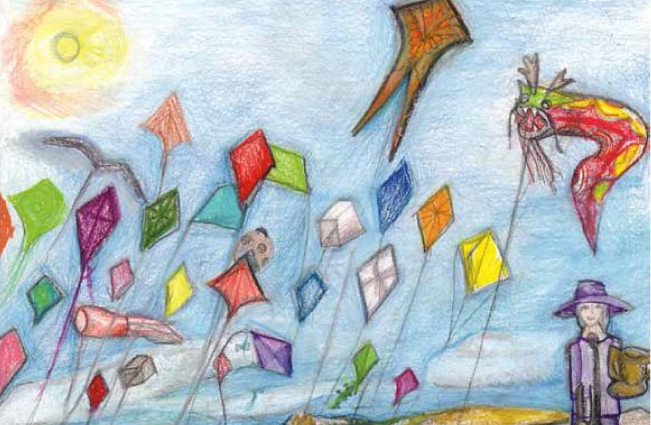
Illustration by Frances Burnett-Stuart, Age 12, Stone Soup October 2013
Stone Soup
editor-selected
Age Range: 13 and younger
Accepts: stories, poems, book reviews, illustrations by assignment
Website
Contributor Guidelines
View a Sample Issue
Started in 1973, Stone Soup is one of the oldest and most well-established publishers of original writing and art by children. My family has subscribed to this magazine for a few months now, and the quality is excellent. The magazine is published six times per year, in print and an iPad version. After written work is submitted, the editors match illustrators with stories and poems, resulting in pieces that are written and illustrated by two different kids. And like Cicada, Stone Soup pays their writers and artists. As of this writing, illustrators get $25 per illustration, and writers get $40 per piece.

Mechanical Elephant by Bitskoff
Storybird
self-publishing
Age Range: all ages
Accepts: fiction and poetry
Website
Sample Story
Storybird is a gorgeous site with a unique approach: Writers explore a gallery of professionally created artwork until they find something that inspires them. Then they write stories and poems to go with those images, and publish the finished product — illustrations included — on Storybird. Students can create their own individual accounts, and teachers can create “classes” within the Storybird environment where they can give and grade assignments, and students can read and comment on each other’s work in a safe, private class library.
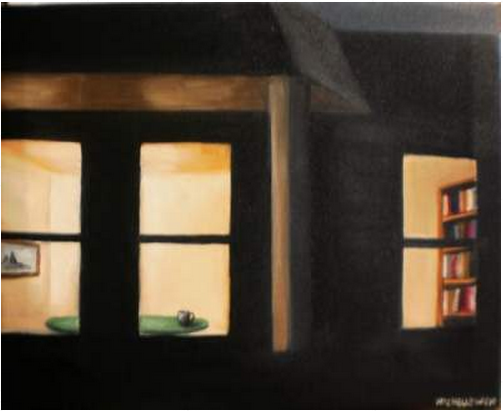
Neighbors by Michelle Taco
Teen Ink
editor-selected
Age Range: 13 to 19
Accepts: poetry, fiction, nonfiction, reviews, art
Website
Submission Guidelines
Sample Issue
One of the longest-running publishers of student writing, Teen Ink puts out 10 issues of their print magazine each year and showcases much more student work on their website and in print anthologies. They also offer an online forum, where students can talk with other teens about their writing or other issues impacting their lives. Educator subscription rates are available.

Ame by Pitsho Mafolo
VoodooChilli
self-publishing
Age Range: none (some “adult” content…not appropriate for younger artists)
Accepts: any form of visual art that can be captured in a still digital image
Website
View a Sample Portfolio
On Voodoochilli, artists create their own online portfolios to share with the world. From the website: “One of the main philosophies behind Voodoochilli is that anyone should feel able to show off their artwork, regardless of ability or training, and we have discovered that giving people the confidence to do just that really helps them to excel. As human beings, art is a part of us all, it is not something for an elite few.” A free account allows you to upload up to 12 images, and by participating actively in the community, artists can earn enough “chiles” to get a free Pro membership, which allows unlimited uploads and the opportunity to sell your artwork.
____________________
Note: Each publication here is labeled as editor-selected (meaning an editorial board chooses pieces to publish) or self-publishing (meaning you publish whatever work you want, without having to be chosen by an editorial board).
If you found this post useful, I’d love to have you come back for more. Join my mailing list and get weekly tips, tools, and inspiration — in quick, bite-sized packages — all geared toward making your teaching more effective and joyful. To thank you, I’ll send you a free copy of my new e-booklet, 20 Ways to Cut Your Grading Time in Half. I look forward to getting to know you better!